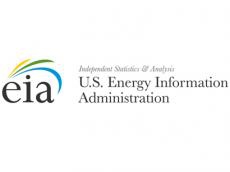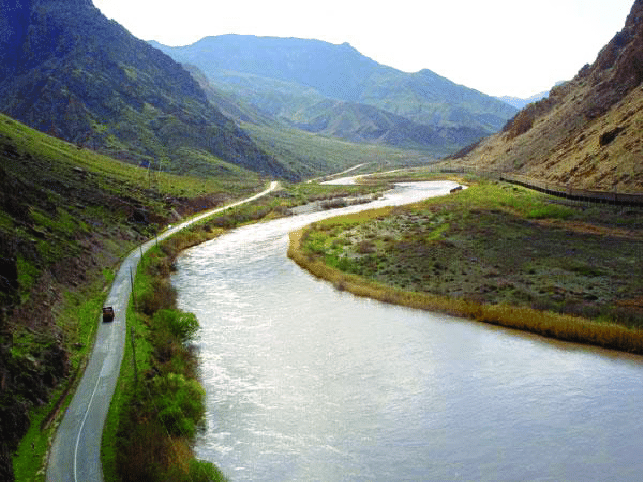|
|
TODAY.AZ / Business
EIA expects U.S. to be net energy exporter by 2026
06 January 2017 [14:47] - TODAY.AZ

By Azernews
By Gunay Camal
The United States is projected to become a net energy exporter by 2026 in the Reference case projections of the Energy Information Administration (EIA).
The Reference case projection assumes trend improvement in known technologies, along with a view of economic and demographic trends reflecting the current central views of leading economic forecasters and demographers.
Net exports are highest in the High Oil and Gas Resource and Technology case as favorable geology and technological developments combine to produce oil and natural gas at lower prices, EIA said in its Annual Energy Outlook 2017.
The High Oil Price case includes favorable economic conditions for producers, but consumption is lower in response to higher prices. Without substantial improvements in technology and more favorable resource availability, US energy production will decline in the 2030s.
Crude oil and petroleum products dominate U.S. energy trade. The U.S. is both an importer and exporter of petroleum liquids, importing mostly crude oil and exporting mostly petroleum products such as gasoline and diesel throughout the Reference case projection.
Proved reserves of crude oil and lease condensate decreased in each of the top five U.S. oil reserves states in 2015. Last year, Texas had the largest proved reserves of any state but also the largest decline—a net decrease of 1 billion barrels of crude oil and lease condensate proved reserves from 2014 to 2015.
North Dakota, dominated by the Bakken shale play within the Williston Basin, had the second-largest proved reserves, and similarly, the second largest decline in 2015, a net decrease of 838 million barrels of crude oil and lease condensate proved reserves.
Proved natural gas reserves decreased in each of the top five U.S. gas reserves states in 2015 . Texas was the largest natural gas reserves state, and it had the largest net decrease (-20.6 Tcf) in 2015. Pennsylvania and Oklahoma (the second and third largest natural gas proved reserves states, respectively) had large net downward revisions, but the declines were partially offset by developments in the Marcellus and Woodford shale plays. These offsets reduced the decline in these states to just 3.9 and 3.6 Tcf in 2015.
URL: http://www.today.az/news/business/157496.html
 Print version
Print version
Connect with us. Get latest news and updates.
See Also
- 04 March 2025 [10:51]
B2B Forum for Azerbaijan, Latvia, Estonia, and Finland kicks off in Baku - 04 March 2025 [10:25]
New milestone in Azerbaijan's pharmaceutical industry - 03 March 2025 [18:48]
Azerbaijan, Pakistan discuss exporting "ASAN Service" Model - 03 March 2025 [18:21]
Baku Engineering University and North Kazakhstan University expand cooperation - 03 March 2025 [15:55]
SOCAR Extends Scholarships for Somali students at Baku Higher Oil School - 03 March 2025 [13:06]
Exhibition showcases products made by women from socially vulnerable groups in Baku - 01 March 2025 [16:23]
SOCAR celebrates 100th anniversary of oil industry archive with exhibition and keynote speeches - 01 March 2025 [13:51]
Mark Jaffe highlights Azerbaijan, Turkiye, and Georgia as key trade partners - 01 March 2025 [13:25]
Transparency and tax reforms to boost investment and employment, says official - 01 March 2025 [12:23]
AzerGold marks World Civil Defense Day with Safety Training Event
Most Popular
 Scholz calls Merz to discuss US-Ukrainian Summit amid Ukraine crisis
Scholz calls Merz to discuss US-Ukrainian Summit amid Ukraine crisis
 Georgian bishop dismisses election concerns, calls for acceptance of results
Georgian bishop dismisses election concerns, calls for acceptance of results
 From Savior to Scapegoat: Ukraine caught in crossfire
From Savior to Scapegoat: Ukraine caught in crossfire
 There is no sense of logic here: the Armenian woman decided to starve INSTEAD OF Rubik Vardanyan
There is no sense of logic here: the Armenian woman decided to starve INSTEAD OF Rubik Vardanyan
 Turkish FM Hakan Fidan to attend European leaders' meeting in London on Ukraine conflict
Turkish FM Hakan Fidan to attend European leaders' meeting in London on Ukraine conflict
 Vietnam to grant Starlink license for satellite internet service
Vietnam to grant Starlink license for satellite internet service
 Iranian media highlights Armenia’s ongoing pollution of Araz River
Iranian media highlights Armenia’s ongoing pollution of Araz River
